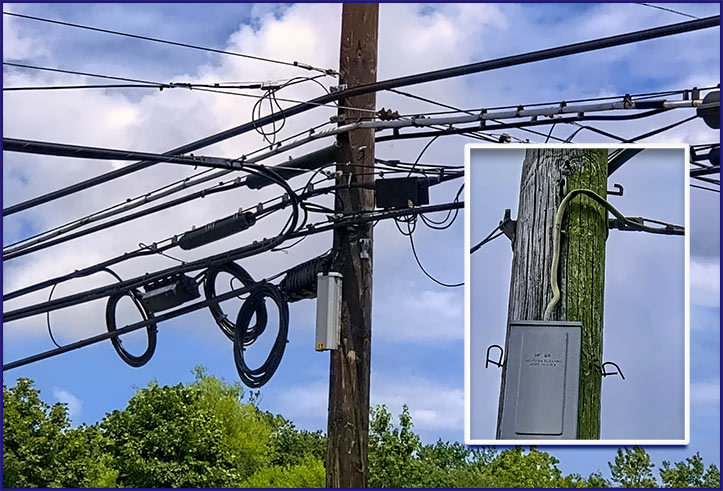
These photographs of cables outside of the plaintiff’s home were included in the lawsuit that said that the Comcast worker would have to climb over Verizon’s lead-sheathed cables that he would grab. He would then eat lunch and might have ingested and inhaled toxic lead.
AT&T’s CEO John Stankey said yesterday at a technology conference that tests conducted at several sites where the carrier has abandoned lead-clad cables have shown no risks of a public health crisis.
His statement comes shortly after AT&T and Verizon investors filed similar securities fraud lawsuits after The Wall Street Journal published articles exposing that toxic cables are still in place throughout the country.
However, a new class action lawsuit has been filed against Verizon by a former Comcast utility worker, Greg Bostard, who said he had to routinely climb over Verizon’s lead-sheathed cables to service his employer’s cables mounted on the same poles and his direct and regular exposure to the lead cables caused him “a present injury” that creates and or increases the risk that he will develop catastrophic health effects..
The challenging complaint said in New Jersey, Comcast’s aerial cables sit above Verizon’s lead-sheathed cables and Bostard had to frequently climb over them.
Bostard said that he used those toxic cables “to hook in while he worked on Comcast’s aerial cables.”
The complaint said that Bostard would use his hands to wrap a strap around Verizon’s cables.
“As Mr. Bostard perspired, he would rub his face, including his eyes and mouth with his hands that had been in direct contact with Verizon’s lead-sheathed cables. During lunch, Mr. Bostard would use his hands to eat. As a result, Mr. Bostard was in direct and regular contact with Verizon’s lead-sheathed cables and ingested and inhaled lead from Verizon’s lead-sheathed cables during the course of his 29-year career,” the lawsuit states.
The complaint generally recycled information that appears in the newspaper’s articles and two previous lawsuits.
Amongst other requests, Bostard is requesting that the court provide a court-supervised, defendants-funded medical monitoring program under a trust fund that would pay for monitoring of “everyone exposed to lead from the defendant’s lead-sheathed cables”.
















